Razer Leviathan V2 Pro vs Nommo Pro: should you opt for a 2.1 system or wait for the new soundbar?
How does Razer's new soundbar stack up?
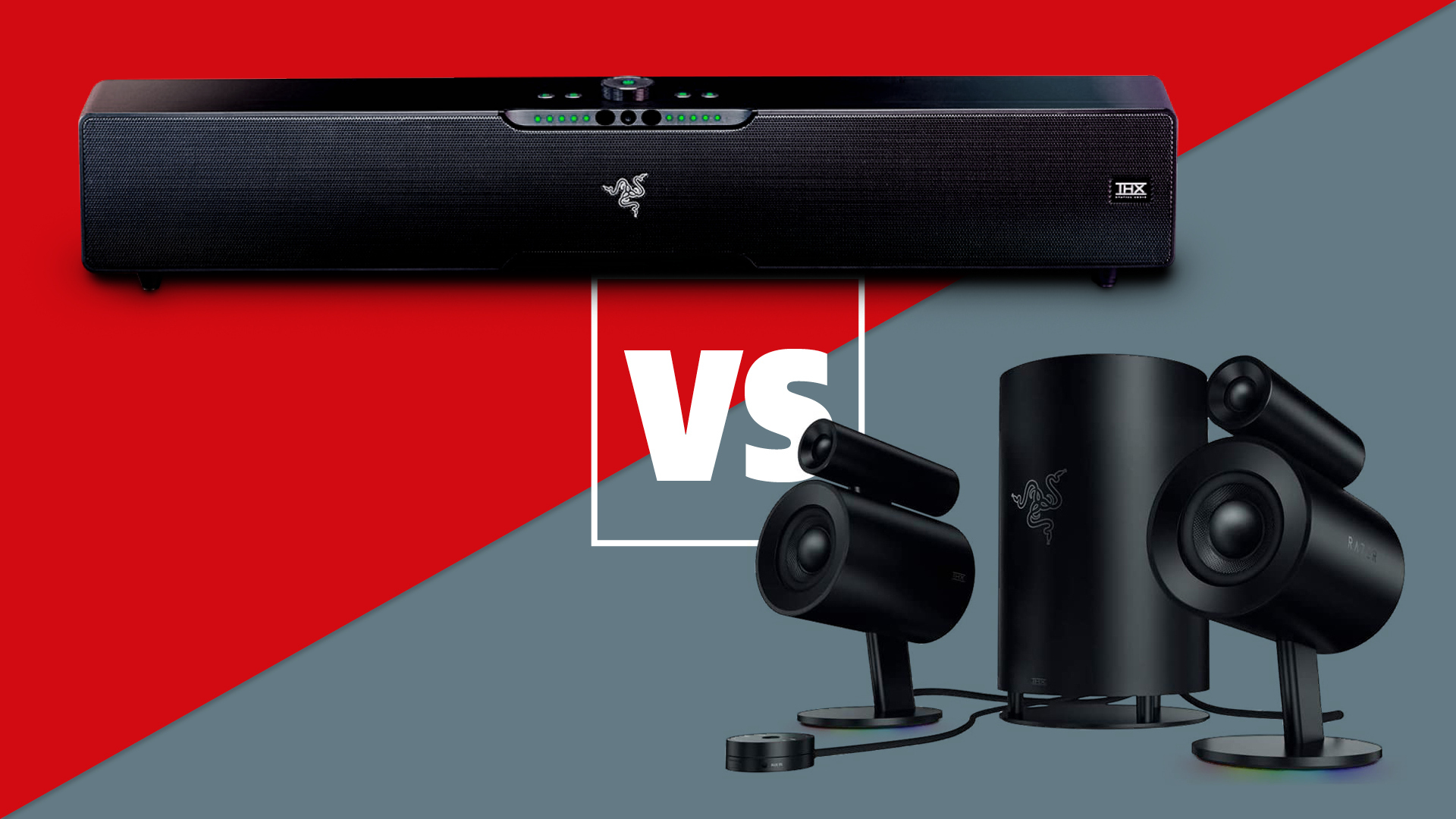
At CES 2023 the world was introduced to Razer’s all-new Leviathan V2 Pro gaming soundbar and at first glance, it’s a very compelling piece of kit - outfitted with beamforming and head-tracking tech in order to stream 3D audio directly to your ears without needing headphones.
However, with its arrival, Razer fans and gamers in general, will likely be left with one key question: should you opt for the fancy new Leviathan, or would you be better served sticking with a more traditional sound system like Razer’s 2.1 THX-certified Nommo Pro? Well, in this article, we’re here to try and answer that question.
We haven’t reviewed the Nommo Pro just yet, and the Leviathan V2 Pro is set to drop at the end of January of this year, but based on what we know about these two products, there’s a lot to be learned. Rest assured, though, that once we get hands-on with either, we’ll be sure to update this page with our more developed thoughts.
So, sit back, relax, and let us walk you through what you need to know about Razer’s Leviathan V2 Pro soundbar and Nommo Pro 2.1 speaker system…
Razer Leviathan V2 Pro vs Nommo Pro: price
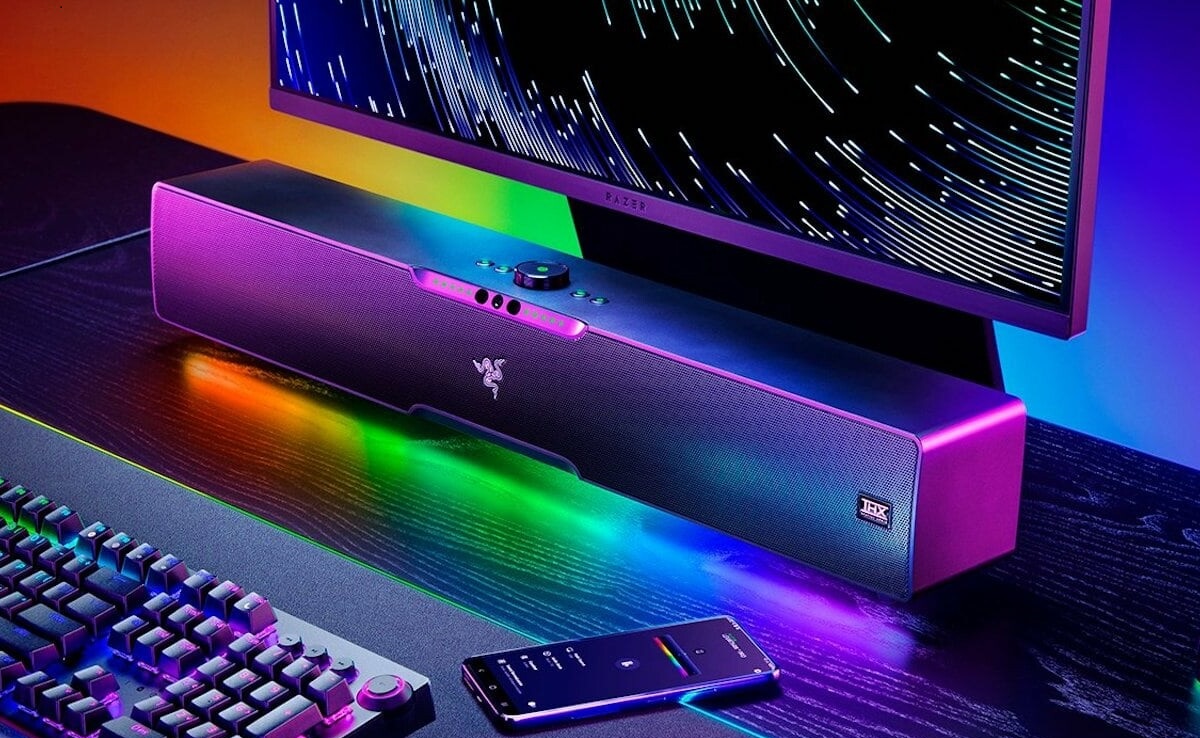
Razer’s all-new Leviathan V2 Pro soundbar will set you back $399.99 / £399.99 when it launches on 31 January, while the Nommo Pro will cost you $599.99 / £499.99. Doing the math there, you’ll see that the Nommo Pro costs quite a bit more than the Leviathan.
Naturally, if price is your main concern, the Leviathan is going to be the better choice, saving you $200 / £100. Usually, soundbars tend to be on the cheaper side vs speaker systems, bundling in all that speaker tech into a single device, but do keep in mind that you’ll be getting a dedicated subwoofer alongside the bar itself with the Leviathan V2 Pro.
Razer Leviathan V2 Pro vs Nommo Pro: build
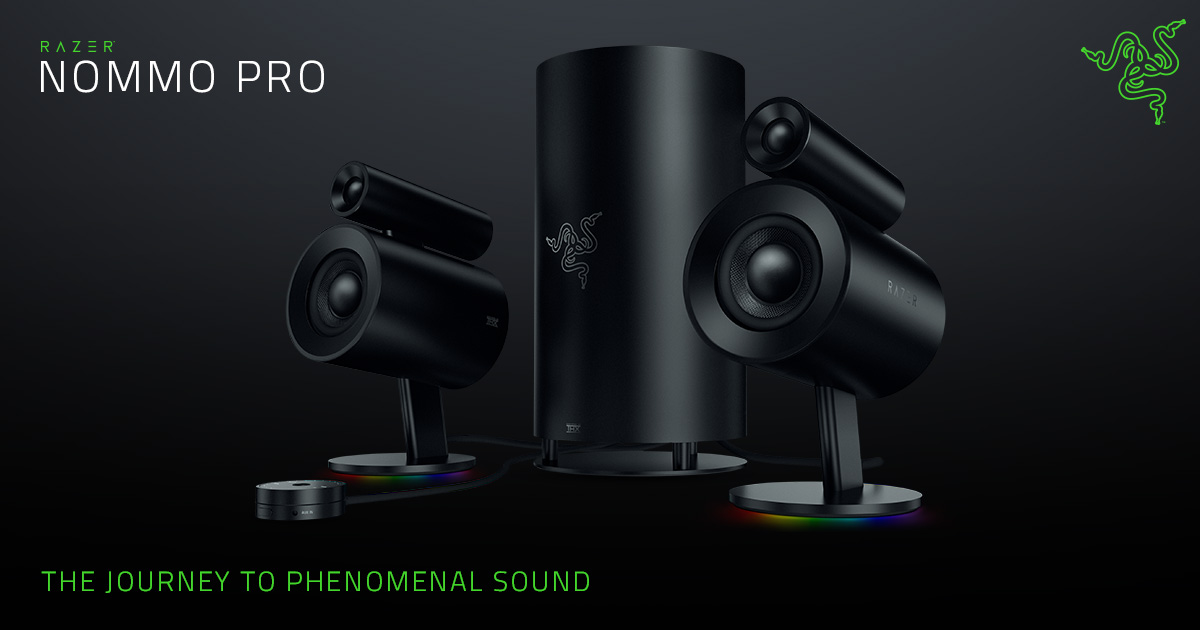
Razer is known for its gamer-first aesthetics replete with bright RGB lights and ostentatious designs. However, both the Nommo Pro and Leviathan V2 Pro are more on the minimalist side. Of course, you will still get RGB out of both, at the base of the speakers in the Nommo and on the bar itself with the Leviathan, but outside of the lighting, neither of these pieces of kit feel outrageously gamer-minded.
Controls of the Leviathan bar will, unsurprisingly, be located on the bar itself, while with the Nommo Pro, you’ll get a small, circular USB dongle you can use to control your system. This will give you a little more flexibility than having to reach over to the bar to adjust something, although less control than a wireless remote might offer, but you will need to make space on your desk for another little gadget and another cable run.
As expected, the footprint of Nommo Pro is less than that of the Leviathan, considering you’ve just got to find space on your desk for a pair of speakers and a subwoofer as opposed to a subwoofer and a rather large bar that wants to be front and center, but that’s to be expected. If saving on space is your priority, though, the Nommo Pro is likely the choice here.
Razer Leviathan V2 Pro vs Nommo Pro: sound
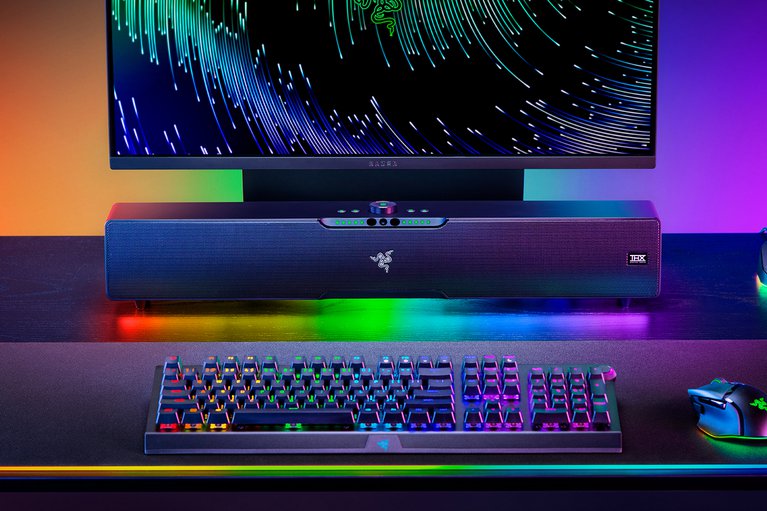
To be upfront, we haven’t reviewed either of these products just yet, so you’ll have to hang tight for an official review from us to get specifics on how both of these actually sound and perform. However, there is definitely much to be gleaned from the specs of the Razer kit at hand.
In terms of the hardware on offer, the Nommo Pro has got a 35Hz to 20KHz frequency response, 0.8-inch silk dome tweets, 3-inch full-range drivers, and a downward-firing subwoofer, while the Leviathan V2 Pro has got a 40Hz to 20KHz frequency response, five 2-inch full-range drivers, and a 5.25-inch downward-firing subwoofer. For a gaming setup the tech’s impressive, but based on our experience, audio quality will largely be determined by how they’re setup and tuned, so until we get them in we can’t sensibly comment on how the two compare.
Where it gets interesting, though, comes down to spatial audio. The Leviathan V2 Pro supports THX Spatial audio while the Nommo Pro is limited to THX Certified Premium Audio, for one. THX Spatial is, on paper, a competitor with more mainstream spatial formats like Dolby Atmos or PS5’s 3D Audio. We’ll need to test THX Spatial on the Leviathan before commenting on how well it works, but the use of the less common tech is, at the very least, interesting.
With the Leviathan V2 Pro, thanks to beamforming and dynamic head-tracking tech, the idea is that the bar will be able to track the location of your head in real-time and pipe spatial audio directly to your ears as if you’re wearing headphones without having to actually wear any. That sounds great on paper, but that’s most assuredly a feature we’d need to test out for ourselves to see how well it works.
Spatial audio is a big deal in games, and if you couple that with the Leviathan’s interesting take on delivering soundbar audio direct to your ears, that could make it a strong competitor with the more expensive Nommo Pro, but ultimately, we’ll have to do some testing to find out.
Razer Leviathan V2 Pro vs Nommo Pro: features
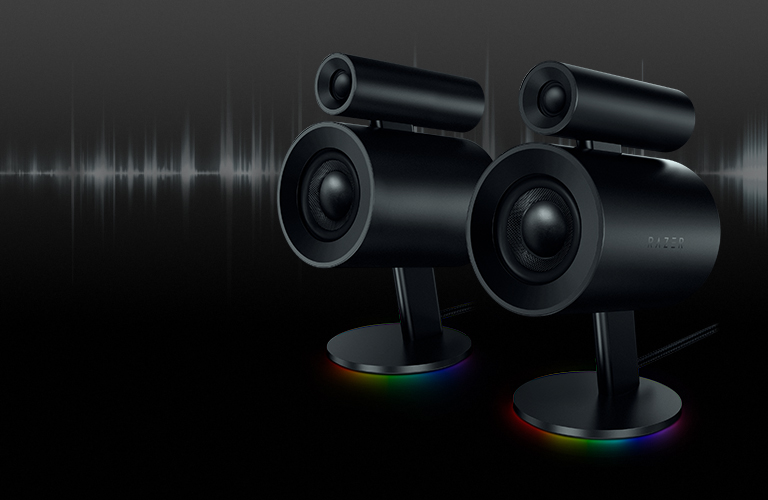
If you love RGB, you’ll definitely be happy with the Leviathan. The bar comes with 30 discrete zones of Razer Chroma RGB that you’ll be able to tweak and customize to your heart’s content via Razer’s Synapse program on PC. Though, the Nommo Pro also comes with customizable Chroma RGB at the base of each speaker, too.
In terms of compatibility and IO, the Leviathan comes with Bluetooth connectivity, a 3.5mm jack, and a USB audio input, while the Nommo Pro also offers up Bluetooth, 3.5mm, and USB audio alongside an optical connection. As you might expect, these are pieces of PC kit that aren’t meant to be used in a home theatre/living room environment. Unless, of course, your home theatre/living room is powered by a PC and not a streamer or smart TV.
As far as EQ goes, you’ll be able to tweak that courtesy of Razer software. With the Nommo Pro, you can set up custom EQ profiles, even change your EQ game-to-game, and much more from within the context of Razer’s Synapse application. The Leviathan V2 Pro is set to come with 10-band Custom EQ, and while we’ll have to wait to get our hands on the Leviathan to see how it actually works, we’d expect a similar system controlled by a Razer app. Suffice it to say that if you want EQ on either piece of Razer kit, you can have it.
In terms of basic features outside of spatial audio, the Nommo and Leviathan are on a relatively even footing.
Razer Leviathan V2 Pro vs Nommo Pro: early verdict
It’s too soon to make any firm claims about which piece of Razer kit is the superior device, but there are a few takeaways.
For one, the Nommo Pro is likely easier to slot into your existing desk setup without upsetting the existing balance you have too much, and if you don’t care for tons of RGB on your speakers, you’ll be happy with the Nommo Pro’s rather limited lighting effects.
However, you won’t be getting THX Spatial built-in with the Nommo Pro, and if both the implementation of THX Spatial as well as the beamforming and head-tracking of the Leviathan turn out to be an effective way to listen to spatial audio without headphones, that could well be a good reason for gamers to not bother ponying up the extra cash for the Nommo Pro.
All told, if you’re looking at Razer’s Nommo Pro as your next PC speaker set, right now, you may want to either stick with the more traditional Nommo Pro or wait until we have a chance to test out the admittedly exciting features built into the Leviathan V2 Pro.
MORE:
Take a look at our full CES 2023 coverage
As well as all the stars of CES 2023
And more info on the Leviathan V2 Pro
Get the What Hi-Fi? Newsletter
The latest hi-fi, home cinema and tech news, reviews, buying advice and deals, direct to your inbox.
Ruben is a long-time freelance consumer technology and gaming journalist, and was previously a Staff Writer at What Hi-Fi?. Since 2014, Ruben has written news, reviews, features, guides, and everything in-between at a huge variety of outlets that include Lifewire, PCGamesN, GamesRadar+, TheGamer, Twinfinite, and many more. Ruben's a dedicated gamer, tech nerd, and the kind of person who misses physical media. In his spare time, you can find Ruben cooking something delicious or, more likely, lying in bed consuming content.
